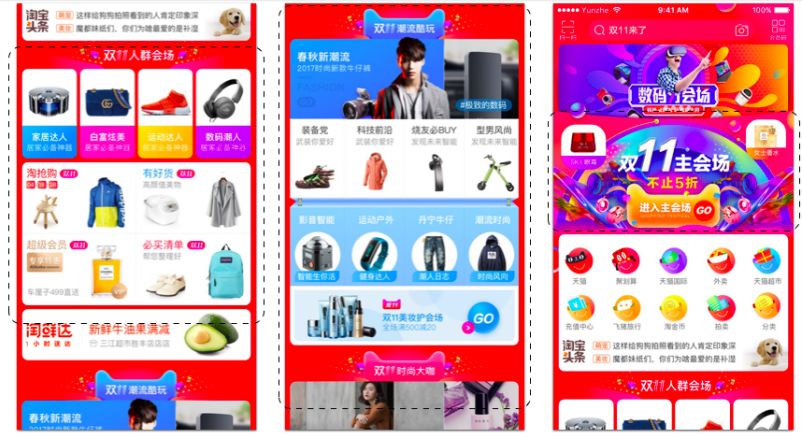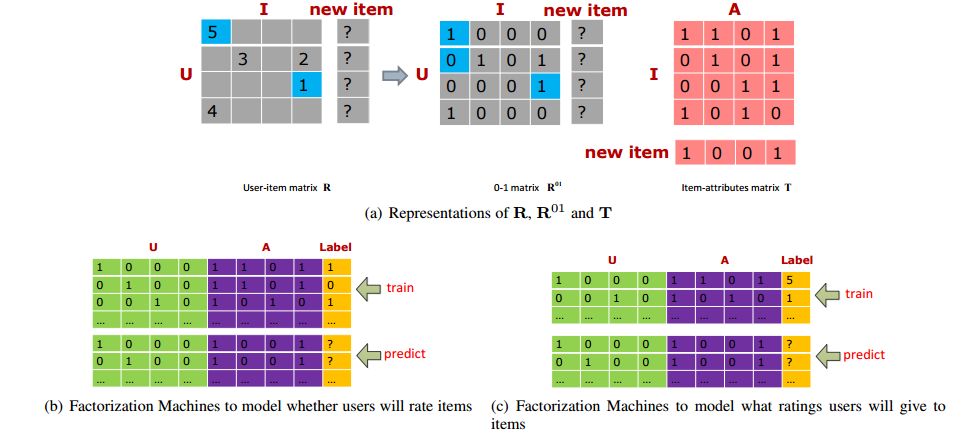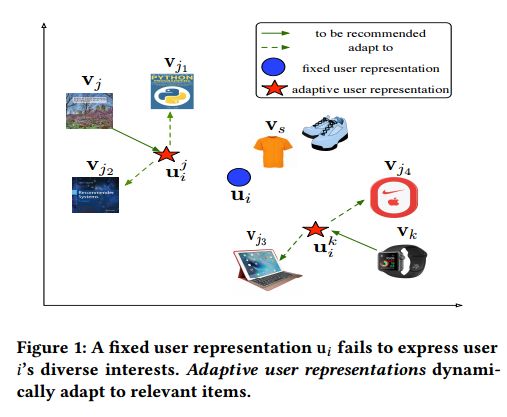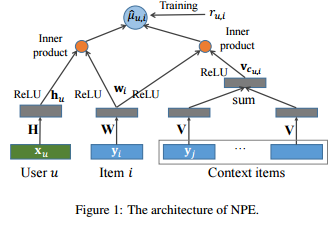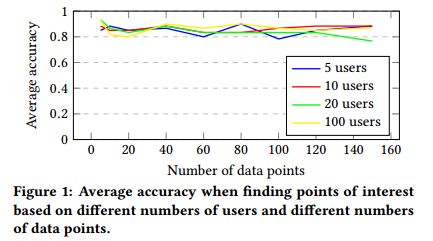【论文推荐】最新八篇推荐系统相关论文—亿级商品嵌入、主动学习、树深度模型、知识图谱、注意力感知、矩阵分解、神经个性化嵌入
【导读】专知内容组推出近期八篇推荐系统(Recommendation System)相关论文,欢迎查看!
1.Billion-scale Commodity Embedding for E-commerce Recommendation in Alibaba(亿级商品嵌入在阿里巴巴电子商务推荐中的应用)
作者:Jizhe Wang,Pipei Huang,Huan Zhao,Zhibo Zhang,Binqiang Zhao,Dik Lun Lee
机构:Hong Kong University of Science and Technology
摘要:Recommender systems (RSs) have been the most important technology for increasing the business in Taobao, the largest online consumer-to-consumer (C2C) platform in China. The billion-scale data in Taobao creates three major challenges to Taobao's RS: scalability, sparsity and cold start. In this paper, we present our technical solutions to address these three challenges. The methods are based on the graph embedding framework. We first construct an item graph from users' behavior history. Each item is then represented as a vector using graph embedding. The item embeddings are employed to compute pairwise similarities between all items, which are then used in the recommendation process. To alleviate the sparsity and cold start problems, side information is incorporated into the embedding framework. We propose two aggregation methods to integrate the embeddings of items and the corresponding side information. Experimental results from offline experiments show that methods incorporating side information are superior to those that do not. Further, we describe the platform upon which the embedding methods are deployed and the workflow to process the billion-scale data in Taobao. Using online A/B test, we show that the online Click-Through-Rate (CTRs) are improved comparing to the previous recommendation methods widely used in Taobao, further demonstrating the effectiveness and feasibility of our proposed methods in Taobao's live production environment.
期刊:arXiv, 2018年5月24日
网址:
http://www.zhuanzhi.ai/document/7be604e1949e18eee3c81bb4e30fbe3d
2.Addressing the Item Cold-start Problem by Attribute-driven Active Learning (属性驱动主动学习解决项目冷启动问题)
作者:Yu Zhu,Jinhao Lin,Shibi He,Beidou Wang,Ziyu Guan,Haifeng Liu,Deng Cai
摘要:In recommender systems, cold-start issues are situations where no previous events, e.g. ratings, are known for certain users or items. In this paper, we focus on the item cold-start problem. Both content information (e.g. item attributes) and initial user ratings are valuable for seizing users' preferences on a new item. However, previous methods for the item cold-start problem either 1) incorporate content information into collaborative filtering to perform hybrid recommendation, or 2) actively select users to rate the new item without considering content information and then do collaborative filtering. In this paper, we propose a novel recommendation scheme for the item cold-start problem by leverage both active learning and items' attribute information. Specifically, we design useful user selection criteria based on items' attributes and users' rating history, and combine the criteria in an optimization framework for selecting users. By exploiting the feedback ratings, users' previous ratings and items' attributes, we then generate accurate rating predictions for the other unselected users. Experimental results on two real-world datasets show the superiority of our proposed method over traditional methods.
期刊:arXiv, 2018年5月23日
网址:
http://www.zhuanzhi.ai/document/760546c8534a5037e8109fc2356fc682
3.Learning Tree-based Deep Model for Recommender Systems (学习基于树的推荐系统深度模型)
作者:Han Zhu,Xiang Li,Pengye Zhang,Guozheng Li,Jie He,Han Li,Kun Gai
摘要:Model-based methods for recommender systems have been studied extensively in recent years. In systems with large corpus, however, the calculation cost for the learnt model to predict all user-item preferences is tremendous, which makes full corpus retrieval extremely difficult. To overcome the calculation barriers, models such as matrix factorization resort to inner product form (i.e., model user-item preference as the inner product of user, item latent factors) and indexes to facilitate efficient approximate k-nearest neighbor searches. However, it still remains challenging to incorporate more expressive interaction forms between user and item features, e.g., interactions through deep neural networks, because of the calculation cost. In this paper, we focus on the problem of introducing arbitrary advanced models to recommender systems with large corpus. We propose a novel tree-based method which can provide logarithmic complexity w.r.t. corpus size even with more expressive models such as deep neural networks. Our main idea is to predict user interests from coarse to fine by traversing tree nodes in a top-down fashion and making decisions for each user-node pair. We also show that the tree structure can be jointly learnt towards better compatibility with users' interest distribution and hence facilitate both training and prediction. Experimental evaluations with two large-scale real-world datasets show that the proposed method significantly outperforms traditional methods. Online A/B test results in Taobao display advertising platform also demonstrate the effectiveness of the proposed method in production environments.
期刊:arXiv, 2018年5月21日
网址:
http://www.zhuanzhi.ai/document/4c33eb91e85e96988b3e377d2df8760e
4.Ripple Network: Propagating User Preferences on the Knowledge Graph for Recommender Systems(在推荐系统的知识图谱上传播用户偏好)
作者:Hongwei Wang,Fuzheng Zhang,Jialin Wang,Miao Zhao,Wenjie Li,Xing Xie,Minyi Guo
机构:Shanghai Jiao Tong University,The Hong Kong Polytechnic University
摘要:To address the sparsity and cold start problem of collaborative filtering, researchers usually make use of side information, such as social networks or item attributes, to improve recommendation performance. This paper considers the knowledge graph as the source of side information. To address the limitations of existing embedding-based and path-based methods for knowledge-graph-aware recommendation, we propose Ripple Network, an end-to-end framework that naturally incorporates the knowledge graph into recommender systems. Similar to actual ripples propagating on the surface of water, Ripple Network stimulates the propagation of user preferences over the set of knowledge entities by automatically and iteratively extending a user's potential interests along links in the knowledge graph. The multiple "ripples" activated by a user's historically clicked items are thus superposed to form the preference distribution of the user with respect to a candidate item, which could be used for predicting the final clicking probability. Through extensive experiments on real-world datasets, we demonstrate that Ripple Network achieves substantial gains in a variety of scenarios, including movie, book and news recommendation, over several state-of-the-art baselines.
期刊:arXiv, 2018年5月19日
网址:
http://www.zhuanzhi.ai/document/558bf35c10884918711cb0166c8bdae4
5.MARS: Memory Attention-Aware Recommender System (MARS:记忆注意力感知的推荐系统)
作者:Lei Zheng,Chun-Ta Lu,Lifang He,Sihong Xie,Vahid Noroozi,He Huang,Philip S. Yu
机构:University of Illinois at Chicago,Cornell University,Lehigh University
摘要:In this paper, we study the problem of modeling users' diverse interests. Previous methods usually learn a fixed user representation, which has a limited ability to represent distinct interests of a user. In order to model users' various interests, we propose a Memory Attention-aware Recommender System (MARS). MARS utilizes a memory component and a novel attentional mechanism to learn deep \textit{adaptive user representations}. Trained in an end-to-end fashion, MARS adaptively summarizes users' interests. In the experiments, MARS outperforms seven state-of-the-art methods on three real-world datasets in terms of recall and mean average precision. We also demonstrate that MARS has a great interpretability to explain its recommendation results, which is important in many recommendation scenarios.
期刊:arXiv, 2018年5月18日
网址:
http://www.zhuanzhi.ai/document/058a52c5b50a1b6962310b4a32e4bae8
6.Leveraging Social Signal to Improve Item Recommendation for Matrix Factorization (利用社交信号改进矩阵分解的推荐)
作者:Ze Wang,Hong Li
摘要:Although Recommender Systems have been comprehensively studied in the past decade both in industry and academia, most of current recommender systems suffer from the fol- lowing issues: 1) The data sparsity of the user-item matrix seriously affect the recommender system quality. As a result, most of traditional recommender system approaches are not able to deal with the users who have rated few items, which is known as cold start problem in recommender system. 2) Traditional recommender systems assume that users are in- dependently and identically distributed and ignore the social relation between users. However, in real life scenario, due to the exponential growth of social networking service, such as facebook and Twitter, social connections between different users play an significant role for recommender system task. In this work, aiming at providing a better recommender sys- tems by incorporating user social network information, we propose a matrix factorization framework with user social connection constraints. Experimental results on the real-life dataset shows that the proposed method performs signifi- cantly better than the state-of-the-art approaches in terms of MAE and RMSE, especially for the cold start users.
期刊:arXiv, 2018年5月17日
网址:
http://www.zhuanzhi.ai/document/795eec46bb573872a260a06dc89f905a
7.NPE: Neural Personalized Embedding for Collaborative Filtering (NPE:基于神经个性化嵌入的协同过滤)
作者:ThaiBinh Nguyen,Atsuhiro Takasu
IJCAI-ECAI 2018
机构:The Graduate University for Advanced Studies
摘要:Matrix factorization is one of the most efficient approaches in recommender systems. However, such algorithms, which rely on the interactions between users and items, perform poorly for "cold-users" (users with little history of such interactions) and at capturing the relationships between closely related items. To address these problems, we propose a neural personalized embedding (NPE) model, which improves the recommendation performance for cold-users and can learn effective representations of items. It models a user's click to an item in two terms: the personal preference of the user for the item, and the relationships between this item and other items clicked by the user. We show that NPE outperforms competing methods for top-N recommendations, specially for cold-user recommendations. We also performed a qualitative analysis that shows the effectiveness of the representations learned by the model.
期刊:arXiv, 2018年5月17日
网址:
http://www.zhuanzhi.ai/document/3b8cb0892d051da054960cad8a8be1aa
8.Faithfully Explaining Rankings in a News Recommender System (在新闻推荐系统中忠实地解释排名)
作者:Maartje ter Hoeve,Anne Schuth,Daan Odijk,Maarten de Rijke
机构:University of Amsterdam
摘要:There is an increasing demand for algorithms to explain their outcomes. So far, there is no method that explains the rankings produced by a ranking algorithm. To address this gap we propose LISTEN, a LISTwise ExplaiNer, to explain rankings produced by a ranking algorithm. To efficiently use LISTEN in production, we train a neural network to learn the underlying explanation space created by LISTEN; we call this model Q-LISTEN. We show that LISTEN produces faithful explanations and that Q-LISTEN is able to learn these explanations. Moreover, we show that LISTEN is safe to use in a real world environment: users of a news recommendation system do not behave significantly differently when they are exposed to explanations generated by LISTEN instead of manually generated explanations.
期刊:arXiv, 2018年5月15日
网址:
http://www.zhuanzhi.ai/document/c97b622c63e6a484771edf63916a6f07
-END-
专 · 知
人工智能领域主题知识资料查看与加入专知人工智能服务群:
【专知AI服务计划】专知AI知识技术服务会员群加入与人工智能领域26个主题知识资料全集获取。欢迎微信扫一扫加入专知人工智能知识星球群,获取专业知识教程视频资料和与专家交流咨询!
请PC登录www.zhuanzhi.ai或者点击阅读原文,注册登录专知,获取更多AI知识资料!
请加专知小助手微信(扫一扫如下二维码添加),加入专知主题群(请备注主题类型:AI、NLP、CV、 KG等)交流~
请关注专知公众号,获取人工智能的专业知识!
点击“阅读原文”,使用专知
